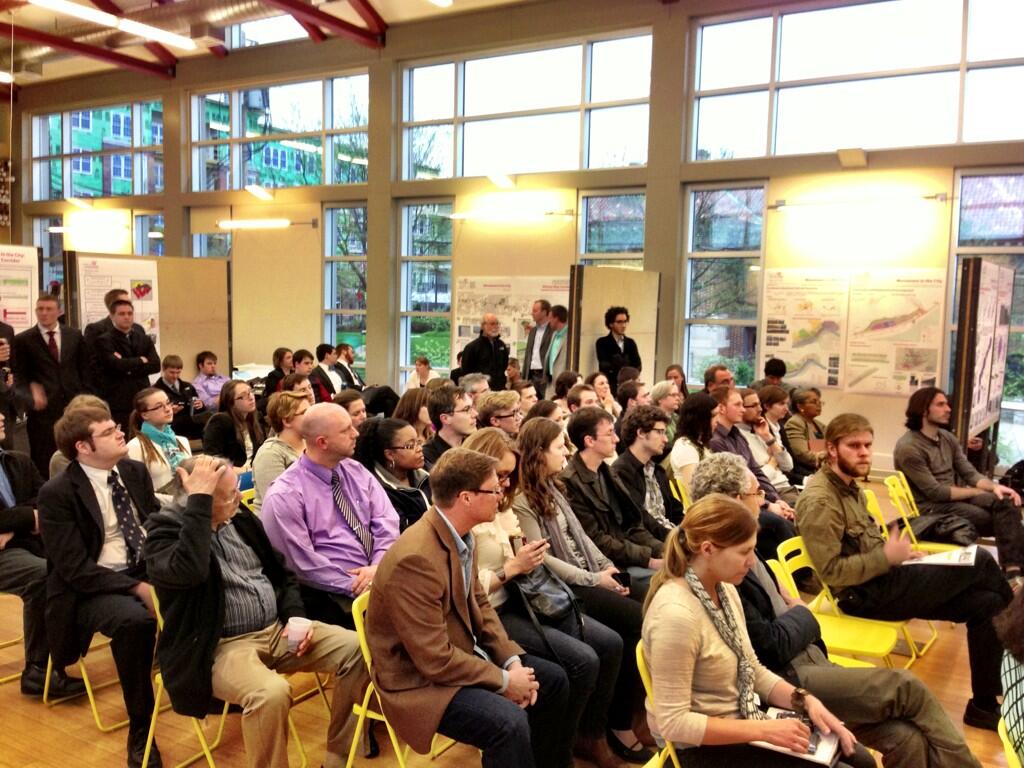On Friday, April 19, UrbanCincy partnered with the Niehoff Urban Studio and hosted an event that showcased student work and included expert analysis and discussion of urban mobility issues in Cincinnati.
Approximately 100 people showed up to the collaborative studio space in Corryville to view the student work, and learn more about the challenges facing Cincinnati today and in the future.
Metropolis & Mobility: Bus Rapid Transit and Bikeway Planning focused on five proposed bus rapid transit and three bikeway corridors throughout Cincinnati. Engineering and planning students were paired together in groups to examine the issues and propose implementation strategies for those potential projects.
Students examining bus rapid transit focused on the Reading Road, Downtown, Hamilton Avenue, Vine Street, and Montgomery Road corridors. The students studying bikeway planning, meanwhile, examined the Wasson Way and Western Riverfront Trail and Mill Creek Greenway.
The event also included an expert panel discussion between Southwest Ohio Regional Transit Authority (SORTA) CEO Terry Garcia Crews, Parsons Brinckerhoff senior transportation planner Tim Reynolds, and Cincinnati Bike Center general manager Jared Arter.
Those interested in listening to the panel discussion can do so by streaming it online, or by subscribing to The UrbanCincy Podcast on iTunes and downloading episode 19.
One of the student proposals was to activate the Riverfront Transit Center and utilize it as a station for BRT and commuter express routes. Just four days after the Metropolis & Mobility event, the Business Courier reported that Metro was interested in doing just that.
Those who attended the event were also able to vote on their favorite project, which will then be profiled right here on UrbanCincy.com in the coming weeks. In the meantime, please enjoy the video put together on the Metropolis & Mobility event by our contributing videographer Andrew Stahlke.
